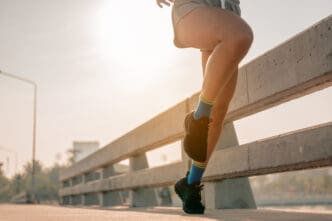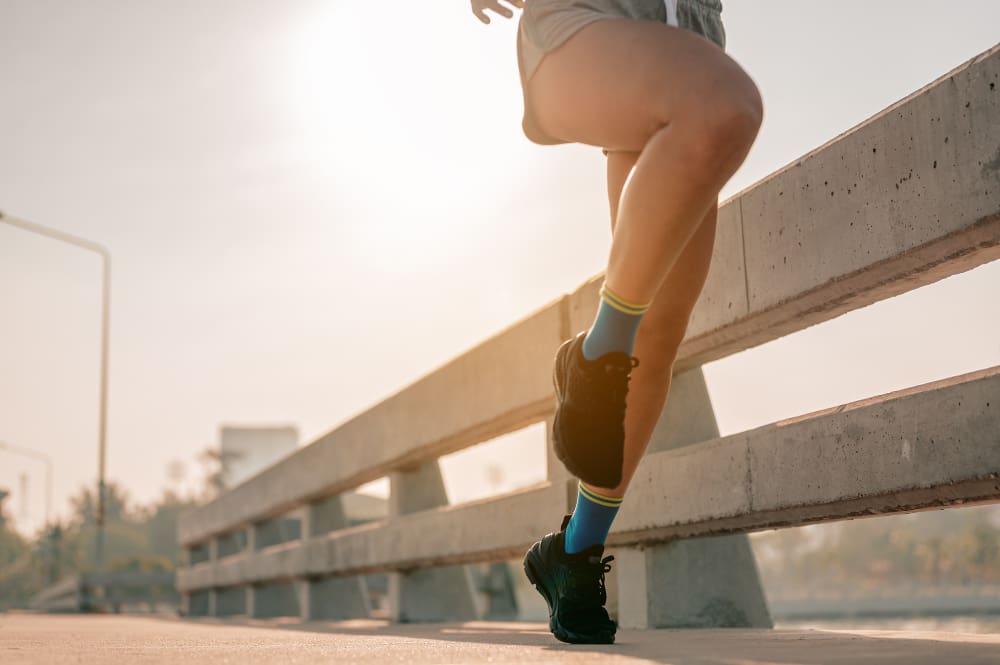For runners of all levels, from weekend joggers to elite marathoners, the best running socks to prevent blisters are those engineered with specific materials and design features to combat the two primary causes: moisture and friction. The ideal sock is made not from cotton, but from moisture-wicking synthetic fabrics like polyester and nylon, or natural performance fibers like Merino wool. When combined with a seamless toe construction, an anatomical (left/right specific) fit, and targeted cushioning, these socks create a protective barrier that keeps the foot dry and stable within the shoe, drastically reducing the shear forces that lead to painful skin separation and fluid buildup. This small investment in specialized gear is one of the most effective strategies for ensuring comfort and preventing a run-ending blister.
The Science of a Blister: An Unholy Union of Friction and Moisture
To appreciate why the right sock is so critical, we first need to understand how a blister actually forms. It’s a common misconception that blisters are caused simply by a shoe rubbing against the skin. The reality is a bit more complex and involves a destructive partnership between friction and moisture.
When you run, your feet sweat—a lot. The average foot has over 125,000 sweat glands and can produce more than half a pint of perspiration during an intense workout. This moisture saturates your sock and softens the outer layers of your skin, the stratum corneum, making it much more pliable and vulnerable to damage.
Simultaneously, with every foot strike, your foot moves slightly inside your shoe. This movement creates friction, but more specifically, it creates shear stress. Imagine two surfaces sliding past each other; shear is the force that tries to deform the material. When a damp, softened layer of skin is subjected to this repetitive shearing, it begins to stretch and tear away from the more stable layers of skin beneath it.
The body’s emergency response system kicks in, flooding the newly created space between these skin layers with a clear fluid called serum. This fluid-filled bubble is what we know as a blister. Its purpose is to cushion the damaged tissue underneath and protect it from further harm, but for a runner, it means pain, compromised performance, and potential infection.
Anatomy of a Blister-Proof Running Sock
The perfect running sock is engineered to disrupt this blister-forming process at every step. It’s not about a single feature, but a combination of material science, thoughtful construction, and precise fit. When shopping for your next pair, here are the non-negotiable elements to look for.
Material Matters: Why Cotton Is the Enemy
If you take away only one piece of advice, let it be this: never run in cotton socks. Among seasoned runners, there’s a saying: “cotton is rotten.” Cotton is a hydrophilic fiber, meaning it loves water. It acts like a sponge, absorbing sweat and holding it directly against your skin.
A sweat-soaked cotton sock becomes heavy, loses its shape, and bunches up inside your shoe. This creates a perpetually damp, high-friction environment—the perfect breeding ground for blisters. It completely fails at the primary job of a performance sock, which is moisture management.
Instead, look for socks made from the following materials:
- Synthetics (Polyester, Nylon, Acrylic): These fibers are hydrophobic, meaning they repel water. Instead of absorbing sweat, they actively pull it away from your skin and push it to the outer surface of the sock, where it can evaporate. This process, known as wicking, is the single most important function of a running sock.
- Merino Wool: Don’t confuse this with the itchy wool of winter sweaters. Merino wool is a natural performance fiber that is exceptionally fine and soft. It can absorb a significant amount of moisture without feeling wet to the touch, and it still insulates when damp. It’s also naturally odor-resistant and provides excellent temperature regulation, keeping your feet cooler in the heat and warmer in the cold.
Construction and Fit: The Devil Is in the Details
A great fabric is only half the battle. How the sock is constructed determines how it interacts with your foot and shoe. A poorly fitting sock, even if made from the best material, can bunch or slip, creating the very friction points you’re trying to avoid.
Seamless Toe Closure: Take a look at a standard casual sock and you’ll likely find a thick, raised seam running across the top of the toes. For a runner, this seam is a major source of irritation and a common cause of blisters on or between the toes. High-quality running socks feature a “seamless” or “hand-linked” toe box, resulting in a completely flat junction that you can’t even feel.
Anatomical Fit: Our left and right feet are not perfect mirror images. Recognizing this, many top-tier sock brands now offer anatomical designs, with socks specifically shaped for the left and right foot (often marked with an “L” and “R”). This provides a more contoured, precise fit that eliminates excess fabric and reduces the likelihood of bunching, especially around the toes and arch.
Arch Support: Look for socks with a band of elasticated or compressive material around the midfoot. This isn’t about orthopedic support, but rather about keeping the sock securely in place. A supportive arch band prevents the sock from sliding down into your shoe or twisting around your foot during your run.
Cushioning Level: Running socks come in various levels of thickness, from ultra-thin to max-cushioned. This is largely a matter of personal preference, but it can play a role in blister prevention. Targeted cushioning in high-impact and high-friction zones—like the heel and the ball of the foot—can help absorb pressure and reduce shear forces. Conversely, some runners prefer a thinner sock for a better feel of the shoe and less heat retention.
Sock Height: Protecting Your Achilles
The height of the sock—from no-show to ankle, quarter, or crew—is mostly about personal style and protection from the elements. However, one feature is critical for blister prevention: the heel tab. Many no-show and ankle-cut running socks include a small, padded tab that extends up the back of the ankle. This simple feature prevents the collar of your running shoe from rubbing directly against your Achilles tendon, a notorious hotspot for blisters.
Specialized Solutions for Stubborn Blisters
For some runners, even the best traditional socks aren’t enough to prevent certain types of blisters, particularly those that form between the toes. In these cases, a more specialized design may be the answer.
The Game-Changer: Toe Socks
Toe socks, most famously produced by the brand Injinji, are designed like gloves for your feet. Each toe is encased in its own individual sleeve of moisture-wicking fabric. This completely eliminates skin-on-skin friction between the toes, which is a common and painful problem for many athletes.
By wrapping each digit, toe socks ensure that any rubbing happens between the fabric surfaces, not your skin. For runners who consistently suffer from interdigital blisters, these socks can be a revolutionary discovery, turning a painful run into a comfortable one.
Beyond the Sock: A Holistic Prevention Strategy
While socks are your first line of defense, a truly effective blister prevention plan is a holistic one. The world’s greatest sock cannot overcome a fundamentally flawed setup.
Properly Fitted Shoes: This is the most important factor of all. A shoe that is too tight will create pressure points, while a shoe that is too loose will allow your foot to slide around excessively. Both scenarios lead to friction. Always buy your running shoes from a specialty store where experts can analyze your gait and measure your feet properly, ensuring you have about a thumb’s width of space between your longest toe and the end of the shoe.
Lacing Techniques: You can use different lacing patterns to solve specific fit issues. For example, a “heel lock” or “runner’s loop” lacing technique uses the top two eyelets to create a tighter cinch around the ankle, preventing your heel from slipping up and down.
Foot Care and Lubricants: Keep your toenails trimmed short to prevent them from jamming into the front of your shoe or rubbing against adjacent toes. For known hotspots, applying a skin lubricant like Body Glide, 2Toms SportShield, or even simple petroleum jelly before a run can create a frictionless surface that allows the sock to glide smoothly over the skin.
Conclusion: An Essential Piece of Gear
Too often, runners spend hundreds of dollars on shoes and GPS watches but skimp on socks, grabbing the first cotton multi-pack they see. This is a fundamental mistake. Think of your running socks not as an accessory, but as an essential piece of performance equipment. By choosing socks made from moisture-wicking synthetic or Merino wool fibers, ensuring they have a seamless and anatomical construction, and pairing them with properly fitted shoes, you can effectively eliminate the friction and moisture that cause blisters. This small change is one of the most powerful tools you have to protect your feet, enhance your comfort, and keep you running happily for miles to come.







